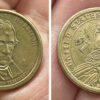A ncillary revenue projected for airlines worldwide is expected to reach $59.2 billion in 2015 — continuing a trend of increased revenue which has occurred every year since 2010, according to this report conducted by IdeaWorksCompany and CarTrawler.
Fees which are generated by activities and services implemented by airlines beyond the core purpose of the transportation of customers from one point to another is what yields ancillary revenue. This wide range of activities and services — which purportedly provides more options for consumers while simultaneously more profit for airlines — includes but is not limited to:
- Commissions gained from the bookings of external products and services such as hotel and rental car reservations
- The sale of frequent flier loyalty program miles to partners
- The offering of benefits and perks — such as upgrades and airport lounge access — for a fee, as is currently being offered by United Airlines with bundled packages for passengers assigned to Economy Plus seats as an example
- The provision of a la carte services — such as fees for checked luggage, expedited access in boarding an airplane, and payment options for access to in-flight entertainment
Ancillary Revenue Has Steadily Increased
The billions of dollars earned by airlines worldwide through ancillary revenue has more than doubled.
Worldwide Estimates of Ancillary Revenue |
|||||
2015 Estimate$59.2 billion — 7.8 percent of global revenue of $763 billion |
2014 Estimate$49.9 billion — 6.7 percent of global revenue of $746 billion |
2013 Estimate$42.6 billion — 6 percent of global revenue of $708 billion |
2012 Estimate$36.1 billion — 5.4 percent of global revenue of $667 billion |
2011 Estimate$32.5 billion — 5.6 percent of global revenue of $577 billion |
2010 Estimate$22.6 billion — 4.8 percent of global revenue of $474 billion |
Source: Ancillary revenue statistics applied by IdeaWorksCompany to individual airline revenue results for the year indicated from Air Transport World, Airline Business, and at airline Internet web sites.
The estimate for 2012 matches what I reported back on Tuesday, October 30, 2012, where airlines around the world would supposedly collect approximately $36.1 billion in revenue from charging ancillary fees such as for checked baggage and premium seats — $12.4 billion of that to the legacy airlines based in the United States, which amounts to 35 percent of the total amount for airlines worldwide — according to the Amadeus Worldwide Estimate of Ancillary Revenues. Approximately half that amount was from collecting revenue as a result of ancillary fees; while the remainder was from the sale of frequent flier loyalty program miles to corporate partners such as credit card companies.
The Gold Rush: Ancillary Fees Will Not Disappear Anytime Soon
Ancillary fees are the gold rush of the travel industry — and the companies are staking their claims as though they were out in the American Wild West.
We have seen ancillary fees added to more and more products and services offered by airlines within recent years; and they are not going away anytime soon — especially as revenue steadily increases year after year.
For example, airlines in the United States collected greater than six billion dollars in baggage and reservation change fees from passengers in 2012, according to this article written by Ben Mutzabaugh of USA TODAY.
In case you were wondering, that was a record — and that did not include other airlines or other ancillary fees.
Ancillary fees now seem to be everywhere — such as in hotels with certain upgrades and the dreaded resort fee and mandatory facilities fee; or rental cars for optional features. The airlines have found their gold rush. Think about it: they cut back on services, charge à la carte fees for them and — as indicated by their profits — people are willingly paying to the tune of billions and billions of dollars. Offer less and charge more money? They’ll take that.
Could the ancillary fees and the seemingly draconian cuts in complimentary products and services — only to return for a fee — hurt airlines in the long run? It is possible — especially if those cuts give the customer the impression that they were done in an unfriendly manner, as though the airline is perceived to be boasting that “we can do what we want, and there is nothing you can do about it.”
In fact, that was the type of attitude and style which Ben Baldanza flaunted when he was chief executive officer of Spirit Airlines, which is known for its blatant infiltration of ancillary fees upon airfares advertised to be incredibly low which has greatly contributed to the success of the ultra-low-cost airline. However — in what seemed to be a “what have you done for me lately” scenario where the airline was not doing as well financially in recent times as it had during much of the ten-year reign under Baldanza — Robert L. Fornaro was promptly and abruptly appointed to replace him as chief executive officer of the airline.
One other possible concern is that the implementation and execution of ancillary fees may have created or increased entitlement attitudes amongst some passengers. Think about it: if a product or service is offered as included in the price of what a person has paid, that person might simply overlook any error and chalk it up to “things happen”; but when a person pays extra for that product or service and something goes wrong, that person might feel more entitled and raise a fuss over what could be considered the most minute of errors — and perhaps take out his or her frustration or anger on other passengers or members of the flight crew.
Summary
I have no problem with the airlines earning money from ancillary fees — as long as the passengers are not surprised with them before leaving their home or business to catch their flights, and as long as the fees are not unreasonable such as the ones Ryanair attempts to charge its passengers or outrageous as in $18,517.00 worth of fees.
In fact, I encourage airlines to be creative about charging fees on items and services which previously did not exist, such as premium meal service for passengers in the economy class cabin or a baggage delivery service.
However, I am against ancillary fees charged for ridiculous items such as for carry-on baggage. Give me a break. I also do not like when airlines — or any company, for that matter — are purposely opaque about what fees are charged, when and to whom.
It is also tough to swallow fees for items and services which used to be included in the airfare years ago — such as full meals on domestic flights and checked baggage. Then again, the airlines were losing a lot of money year after year during those days, and those fees are rather easy to avoid — especially if you are a frequent flier.
One curious exception are that headsets — those acoustically-challenged air tubes with the padding which you stuffed into your ears — used to cost five dollars to use while aboard the airplane. You were required to return them after the flight concluded — not that I can think of any reason why someone would want to abscond with them, as they could not be used with any other device. These days, you can procure headphones for a couple of dollars — or even free of charge — and you can keep them. While their sound quality may not exactly please an audiophile, they do work in portable electronic equipment and are significantly better than those useless air tubes. Better quality for less money? I’ll take that.
I would not necessarily be against airlines charging ancillary fees for items and services which used to be complimentary; but in my opinion, it damages my trust in an airline which claims that by charging for those items and services instead of including them in the airfare, passengers who do not need such items and services simply no longer have to pay for them when airfares are not decreased once those ancillary fees are in effect. If an airline is going to charge $20.00 for checked baggage, then lower the airfare by $20.00 per person. This way, if a person wants to check baggage and knows that a fee is involved, then that person can pay the extra $20.00 that would have been paid when it was included in the airfare; while the person — me, for example — who does not need to check baggage should see the airfare lowered by $20.00. Hey — according to the airline, I automatically paid for it before ancillary fees were implemented, right?
Hmm…perhaps I should file lawsuits against all the airlines on which I was a passenger and seek refunds from all those times I did not check baggage even though it was included in the airfare.
Then again, if those lawsuits attain class action status and I win, I might get pennies on the dollar compared to what the attorneys would earn — such as with this recent settlement from a class-action lawsuit against Gogo LLC where the most for which one could hope is an award worth $96.00.
Airlines have found a business model most companies would like, based on the simple law of supply and demand: take what you used to offer as a complimentary value-added product or service and charge for it — and have your customers willingly pay more for it. There was a time when people would laugh at the prospect of being charged to stow your personal item in the overhead bin — but some airlines are doing exactly that these days.
While we may never see the “good old days” again where everything seemed to be included in the airfare which you paid, I do believe that things happen in cycles. If and when the commercial aviation industry experiences its next significant financial downturn, I would not be surprised to see deals on airfares — possibly accompanied by some products and services once again included with the airfare instead of available for an additional fee.
For now, the commercial aviation industry is enjoying its gold rush; and you had better believe that the airlines — as well as lodging companies, rental car companies and other businesses — will do whatever they can to take full advantage of it for as long a period of time as possible.
Photograph and graphic illustration ©2012 Brian Cohen.

